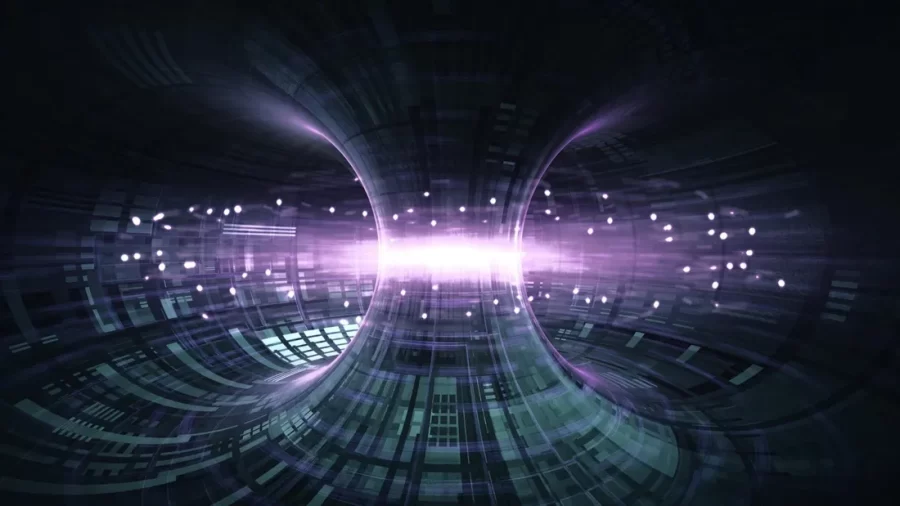Fusion Energy: Worth Spending Watts on?
The year was 1920, a british astrophysicist named Arthur Eddington theorised the basic principel behind a whole new, revolutionairy kind of power production. If it can prove itself, it migth change the way the public sees nuclear energy forever.
What is fusion energy and how does it work?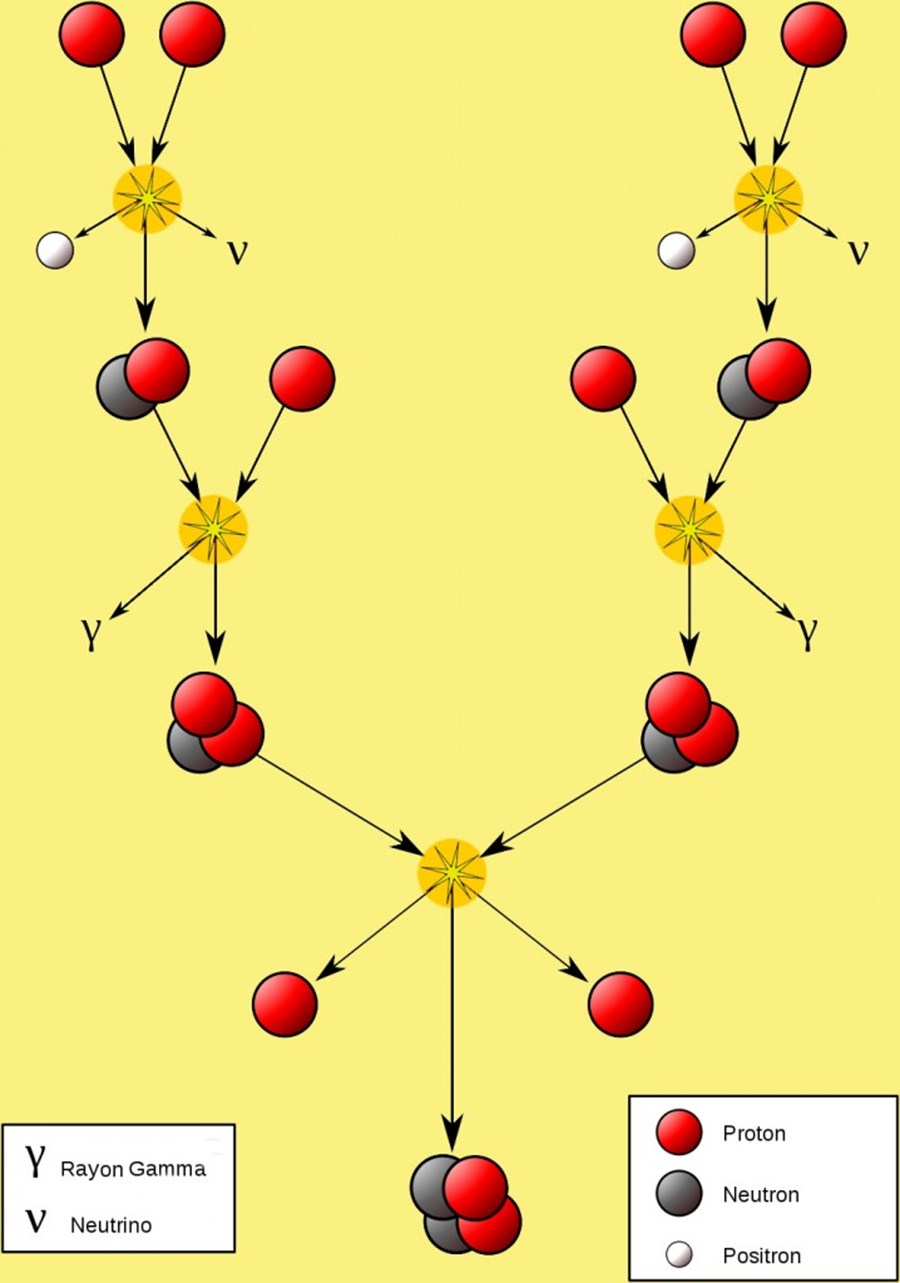
Fusion energy comes from a chemical reaction called nuclear fusion reaction. This reaction is present at the core of stars like our sun. Two light atoms combine to form a heavier atom and, during the process, release energy. A fusion reaction occurs when two atomic nuclei (the part with the protons and the neutrons) collide for long enough so that the nuclear force (the force that brings protons and neutrons together) exceeds the electrostatic force (the one that pushes the nucleus apart). For this to happen, you need enough fuel, time, confinement, pressure, and heat to create a plasma, a fluid state of matter in which the particles vibrate more than gas. Such a substance is so hot that the electrons of the atoms are ripped away from their core. This is how light atoms can transform into heavier ones: by dividing two simple cakes that are light atoms into their ingredients, it is possible to bake a bigger, more complex cake with them while leaving one ingredient behind that will be used elsewhere. In this case, plasma is the oven, literally.
What we have so far
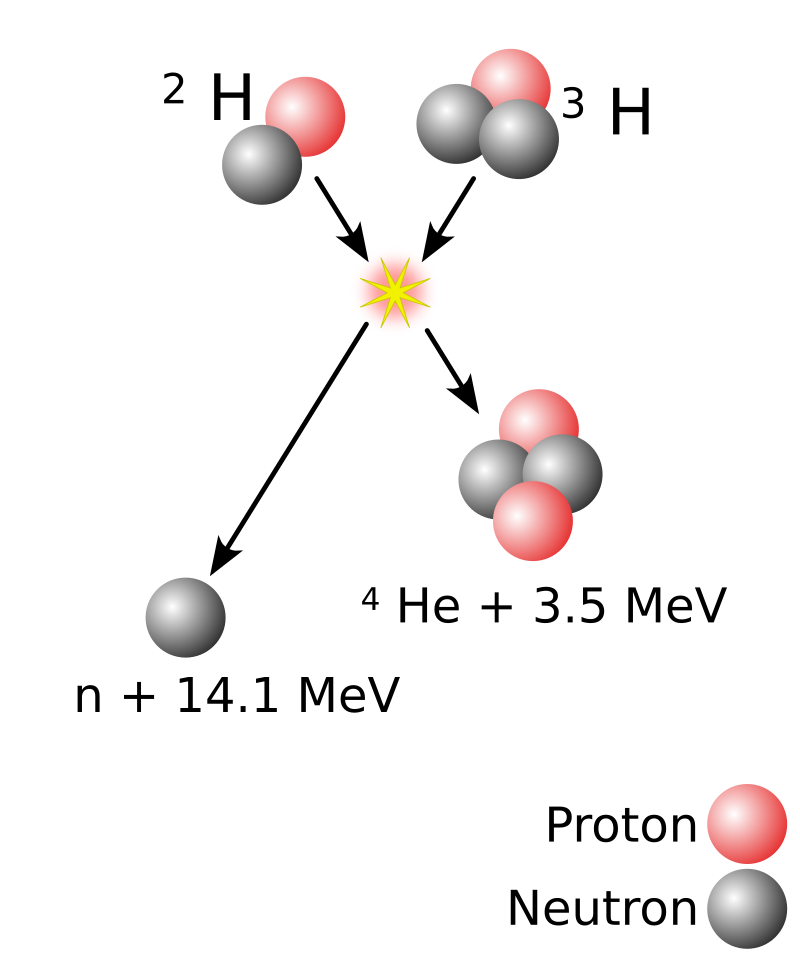
Most proposed fusion reactors intend to transform heavy hydrogen isotopes (the fuel, deuterium, and tritium) mixed together most of the time because they have a lower fusion temperature and produce more energy than other kinds of atoms. When these two fuse, they produce a helium nucleus(2 protons, 2 neutrons). At the same time, the reaction releases an energetic neutron. This is where the energy that the reactor will extract comes from.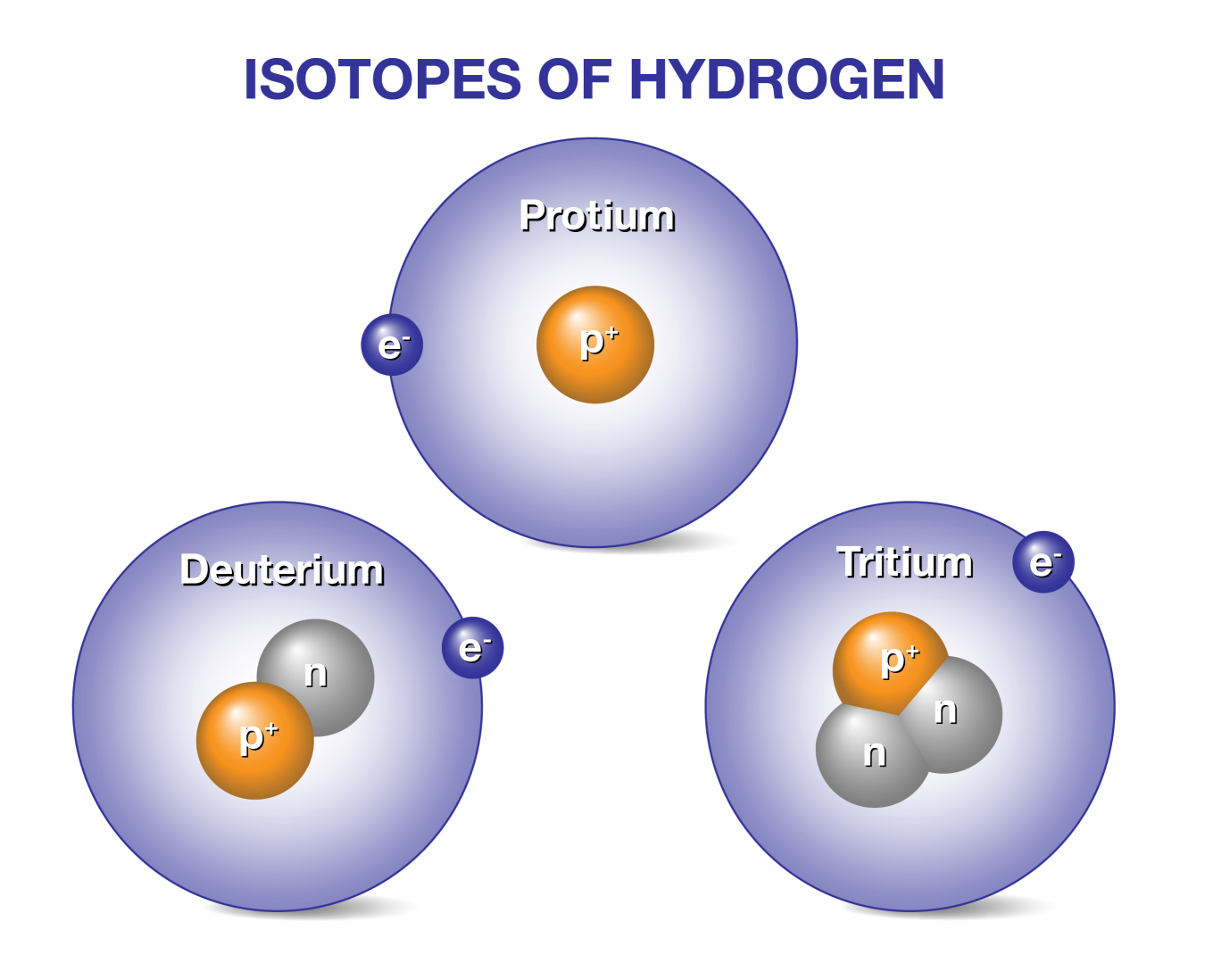
To this day, there are two types of machines that can collect power from fusion reactions: tokamaks and stellarators. Tokamaks, the bigger deal of the two for power plants, confine plasma with the use of magnetic fields in a donut-shaped chamber. Magnetic field plasma is confined. The third group of fields is responsible to make an outer poloidal that gives shape and position to the plasma. As for the stellarator, which concept was invented by Liman Spitzer at Princeton University in 1951, it uses electromagnets with huge amounts of force in order to generate, like tokamaks, twisting magnetic fields that wrap the whole donut chamber. Despite being in the shadow of tokamaks, stellarators have few advantages. First of all, stellarators need less power in order to sustain the plasma. Their design is also more flexible, allowing some aspects of plasma control to be more flexible. Sadly, the cost of these pros comes to complexity, especially for the magnetic field coils.
Tokamaks Stellator
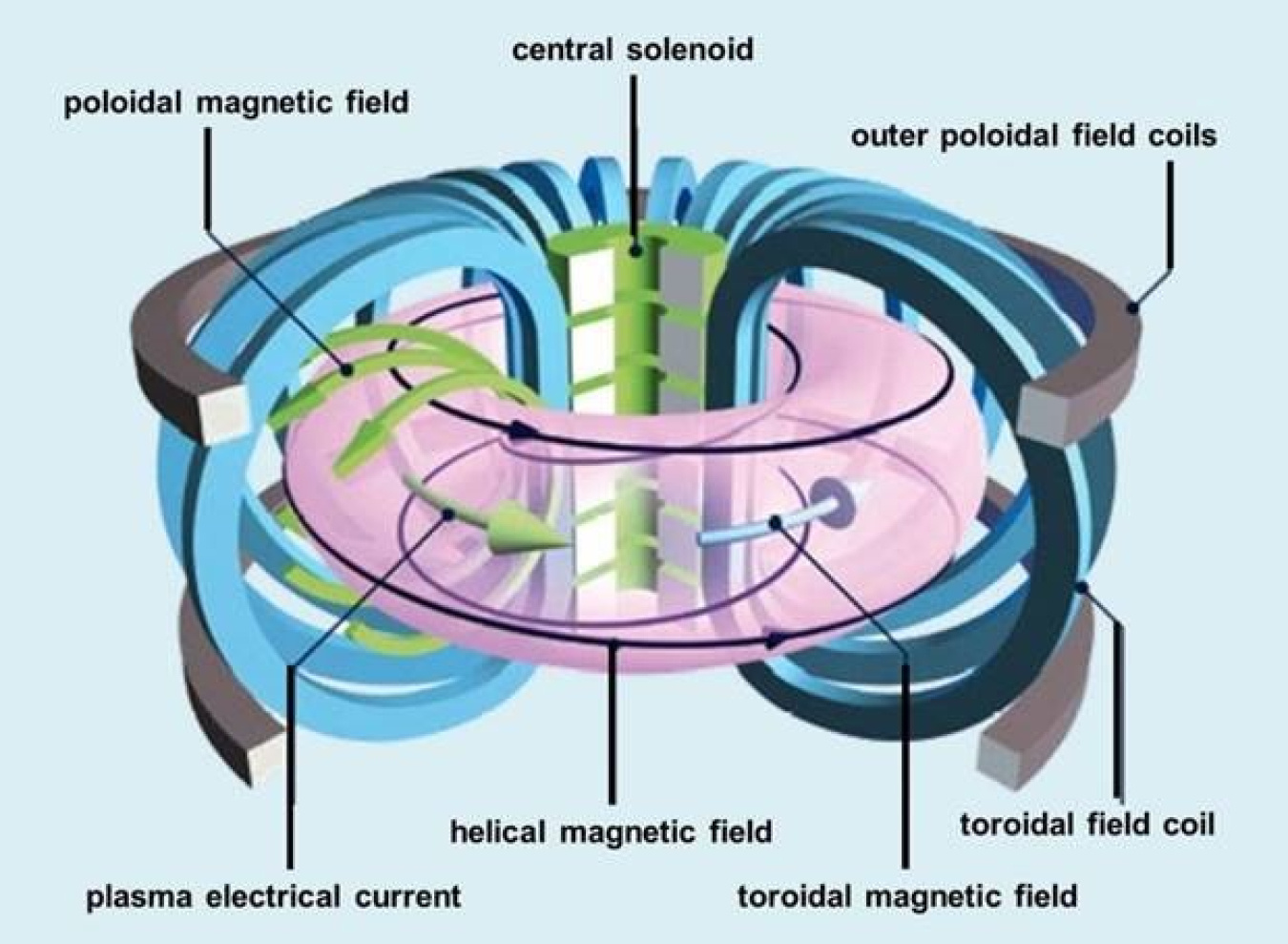
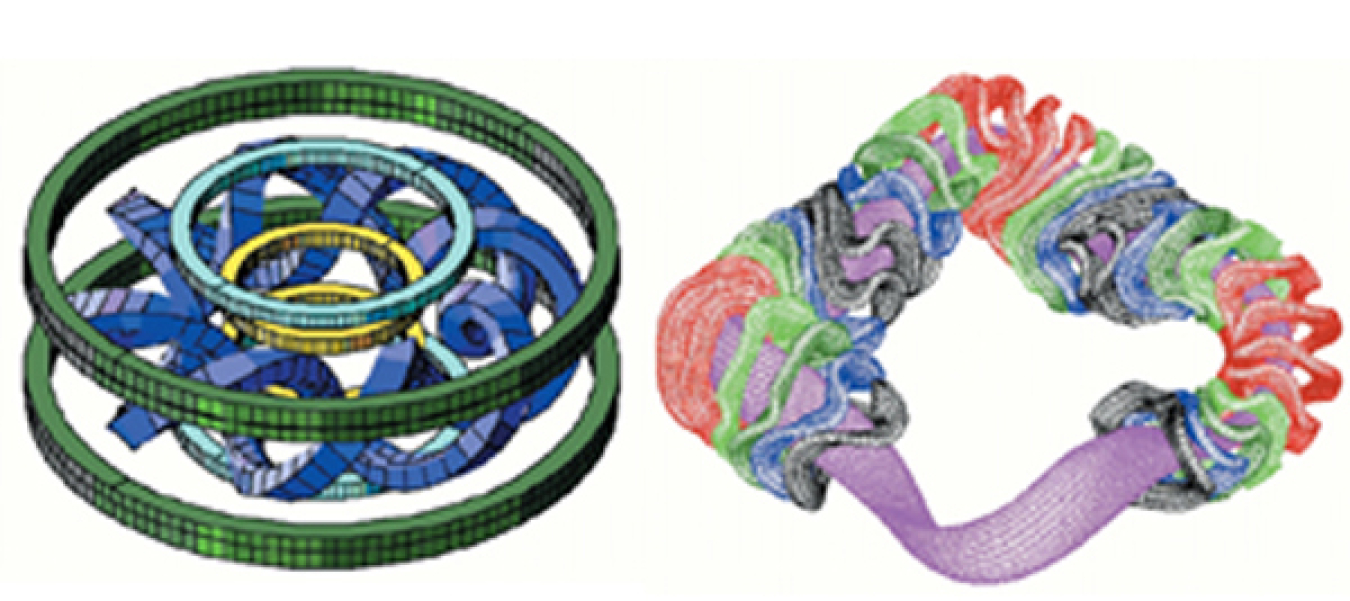
The pros and cons
The first issue to consider about fusion energy is how to get the fuel. Although the reactor itself can be built with everyday metals like steel, the problem comes with the fuel. Deuterium is abundant in the ocean, about one atom in 6420 of hydrogen. Finding it is no big deal, but it still needs the energy to be extracted. As for tritium, the issue comes with its radioactivity, making it an extremely rare and dangerous option. The solution comes with helium 3, another isotope of helium and alternative to tritium with 2 protons and 1 neutron that is very uncommon on earth, but abundant on the moon.
Although getting lots of this substance would require humanity to build a moon base, it’s a solid way to get lots of reactors going. The amount of energy released by fusing atoms together in a controlled way is nearly 4 million times greater than a chemical reaction such as burning fossil fuels and 4 times greater than nuclear fission (the reaction used in conventional nuclear power plants) at an equal mass. It is also very sustainable, the fuel being wildly available and almost inexhaustible. As said, deuterium can be extracted from water and tritium can be produced when fusion neutrons interact with lithium. Although acquiring lithium is not a problem, an initial fusion reaction is needed to produce the tritium. Fusion energy is very clean and safe due to the absence of fissile radioactive substances (uranium, plutonium) as fuel and greenhouse gasses or highly active long-living nuclear waste. There is no risk of a meltdown like in conventional nuclear reactors because the plasma would just cool down if disturbed, leading the reaction to an end. As for the cost, it is expected to be similar to fission power plants, a bit higher at the beginning and going down over time. Finally, it is also expected to produce similar amounts of energy as conventional fusion reactors (between 1 and 1.7 gigawatts).
Conclusion: is fusion energy worth the effort?
Fusion energy, despite its need for materials that humanity is not used to, has a lot of potentials. It could offer a clean and safe way to produce huge amounts of energy for various needs and is a big step in the fight against climate change by allowing mankind to replace fossil fuel energy production with it. Controversies on the subject are becoming more and more common, which is why governments should invest in technology as soon as possible in order for it to gain the trust of a part of the population. That way, scientists will be able to freely make our world a better place.
sources: Iter official website (https://www.iter.org/mag/3/29#:~:text=In%201920%2C%20British%20astrophysicist%20Arthur,fusion%20of%20hydrogen%20into%20helium, https://www.iter.org/sci/Fusion), Wikipedia (https://en.wikipedia.org/wiki/Fusion_power, https://en.wikipedia.org/wiki/Deuterium#:~:text=Deuterium%20has%20a%20natural%20abundance,accounts%20for%20more%20than%2099.98%25.), PSFC official website (https://www.psfc.mit.edu/vision/what_is_plasma#:~:text=Plasma%20is%20often%20called%20%E2%80%9Cthe,negatively%20charged%20particles%20(electrons).),
Energy.gov official website (https://www.energy.gov/science/doe-explainsdeuterium-tritium-fusion-reactor-fuel),

